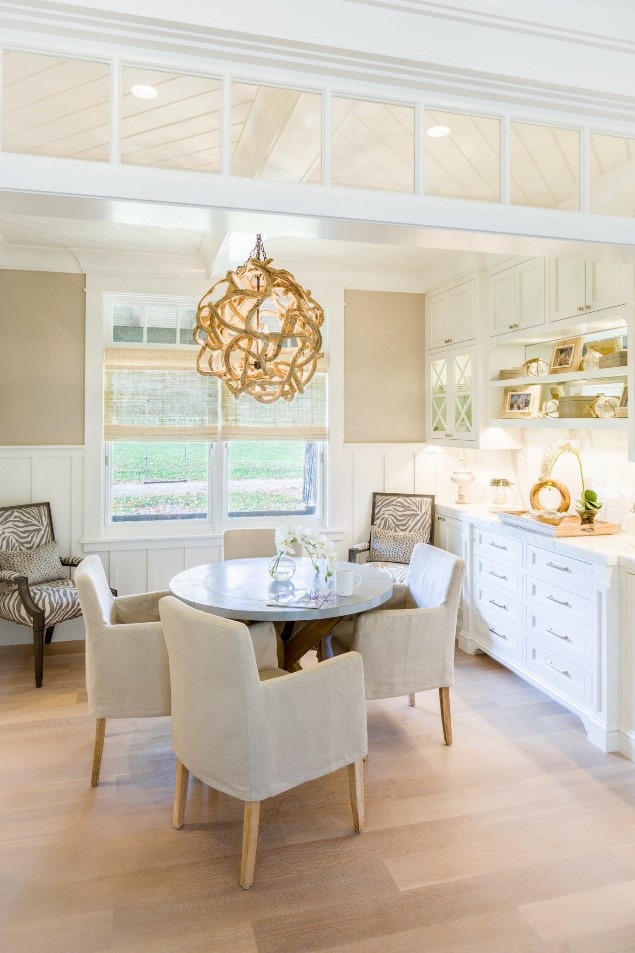Designer secrets: Layering and Texture
When we talk about layering and adding texture in Interior Design, what we’re really talking about it adding additional elements to a room that give it depth, visual interest, and personality.
The key to doing that is to layer in different textural elements.
In Interior Design, texture is the “sense of touch” that an item has, or how something feels.
To create a well-designed, well-layered space, we want to have a variety of items that will offer different feelings or that have different senses of touch to them.
To create a well-designed and complete space, we want to have a variety of layers and textures. This means including items that not only feel different to the touch but have a different visual sense of texture.
Think – a soft carpet under your feet, a smooth leather armchair, and a rough wood coffee table.
What we really want to keep in mind while layering and adding texture to a space, is that texture goes beyond the physical and tactile qualities an item has. We have to remember that items have a “perceived” texture, or visual texture to them. Think of a pillow that may be the same color as a chair, but has an entirely different texture, like a chunky knit pillow against a smooth leather chair. Or even items like tile, while they may be smooth to the touch, can have a beautiful encaustic design that adds visual interest, or visual texture.
Now that we better understand some of the basic ideas behind adding layers and texture to your space, let’s talk about some specific way in which we can achieve that.
(Area Rugs)
One of the easiest and most important ways we layer and add texture to a space are with the use of area rugs. Not only do they perform the very important task of visually defining a room, they quite literally add a layer of comfort and warmth.
Area rugs are a great way to bring texture into a space – you can do so by using materials like natural sisal, or a soft, hand woven Persian rug.
If you take a look at these spaces, you can see how an area rug was incorporated to not only define the space, but to provide the room with a layer of texture and warmth. The use of a natural woven rug contrasts beautifully with the white dining chairs and buffet. And in the second image we can see how this wonderful high-pile rug adds so much softness and texture against the other furniture pieces, and really makes the furniture pieces stand out. And in the last image, we can see there are even two rugs layered on top of one another – with the base as a natural woven sisal, and on top a hide rug. What these images show, is that an area rug is a great base layer in your room to allow the other elements to “pop”.
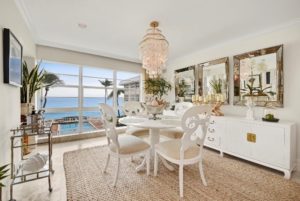

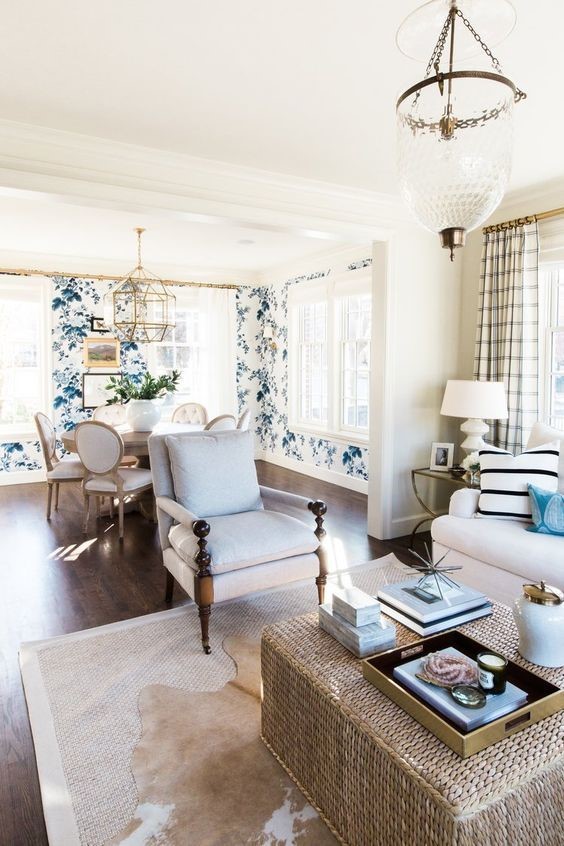 (Window Treatments)
(Window Treatments)
Another way in which you can add both layers and texture to a space is through the use of window treatments.
Window treatments are an essential element to a space, as they add softness to your windows and walls.
As a soft element that we bring into a space, they are a beautiful and visually interesting way to add texture to your walls.
We can achieve this by including draperies, and shades or blinds.
Draperies and shades add a layer of texture to you walls and windows, and also help to make a room feel more complete.
As you can see in these images, the draperies and shades add a layer of dimension to the space and make it feel finished. Even in ultra-modern design, draperies and shades can be a much needed element to soften and complete the look of a room.
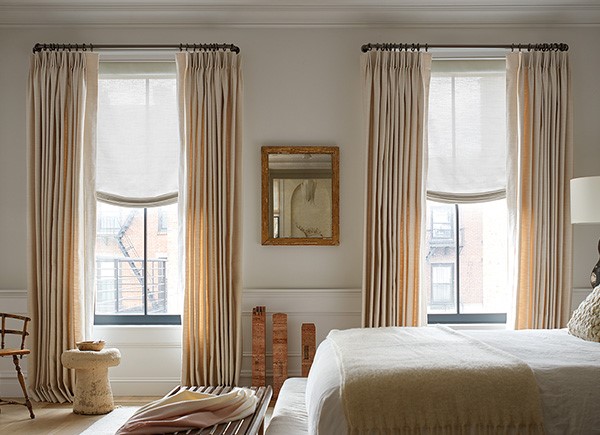
 (Smaller furniture pieces)
(Smaller furniture pieces)
One of the ways we can layer and add texture to a space is through some of our smaller furniture items.
Smaller pieces like end tables, ottomans, armchairs and coffee tables are great ways to bring in a variety of textures and materials. When thinking about some of these smaller furniture pieces, we want to be mindful that too much of one texture or material doesn’t give us much visual interest because too many elements in the room look the same.
How we can achieve a successfully layered space is to select pieces that are made of different materials and have different physical and visual textures. Think of mixing pieces like a leather ottoman with a wood upholstered armchair. Mixing materials keeps the space from feeling stale and allows for a beautifully dynamic room.
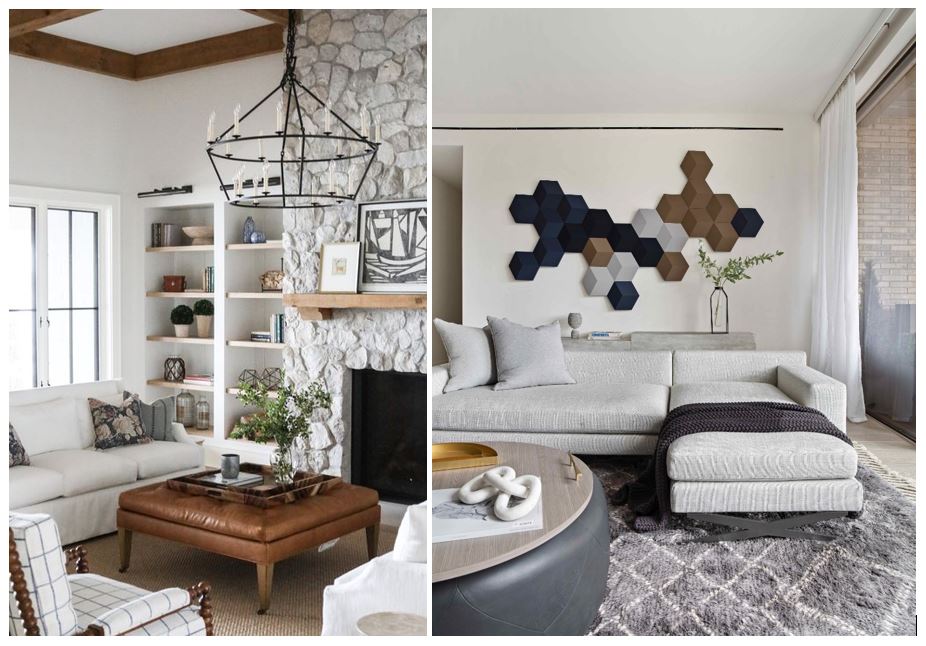 (Textiles and Comfort Items)
(Textiles and Comfort Items)
Here, we’re talking about soft and comfortable items that we can layer into a space. These are things like pillows, throws, blankets and duvets.
These types of items are one of the easiest and quickest ways we can add layers of texture and especially comfort into a space.
Think about adding pillows of a contrasting color or material to sofas, lounge chairs, and beds.
Adding a soft cashmere or chunky knit throw to a sofa or bed is a great way to add a comfortable layer to sofas and beds.
In some of these examples, you can see how a wide variety of color, patterns and textures are used on these sofas to add visual interest. You can see examples in the photos where some of the pillows and throws are similar in color and tone to the bedding or sofa, but with the use of a contrasting texture or pattern, we see a cohesive, yet dynamic and visually interesting space.
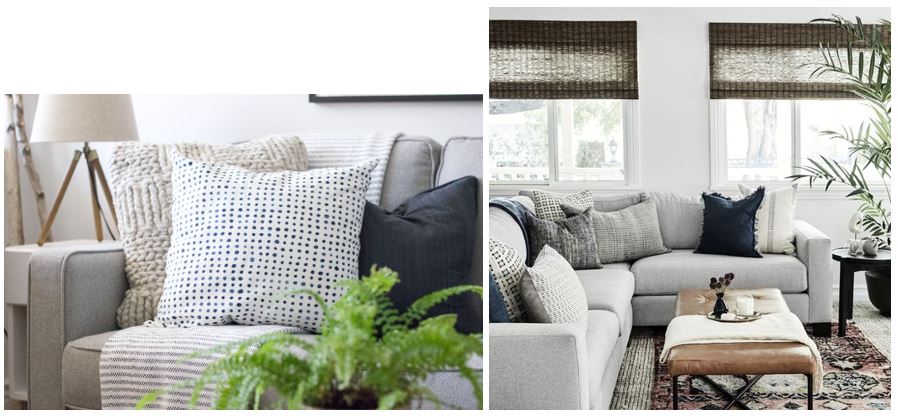
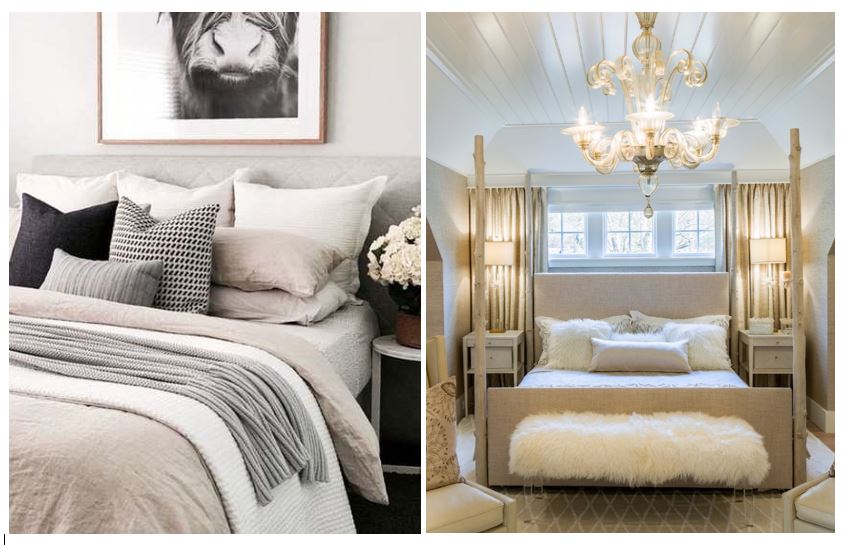 (Accessories)
(Accessories)
Adding meaningful, curated accessories is one of the most important steps in created a layered and complete space.
Accessories add color, texture, warmth, and personality to a room.
Here we should think about bringing in things like baskets to hold magazines or pillows, ceramic bowls and dishes, beautiful books, trays, and your favorite framed photos.
All of these things are small, but effective ways of layering in different colors and materials.
When thinking about accessories, don’t forget about your walls! Think about including things like mirrors, and art or wall décor.
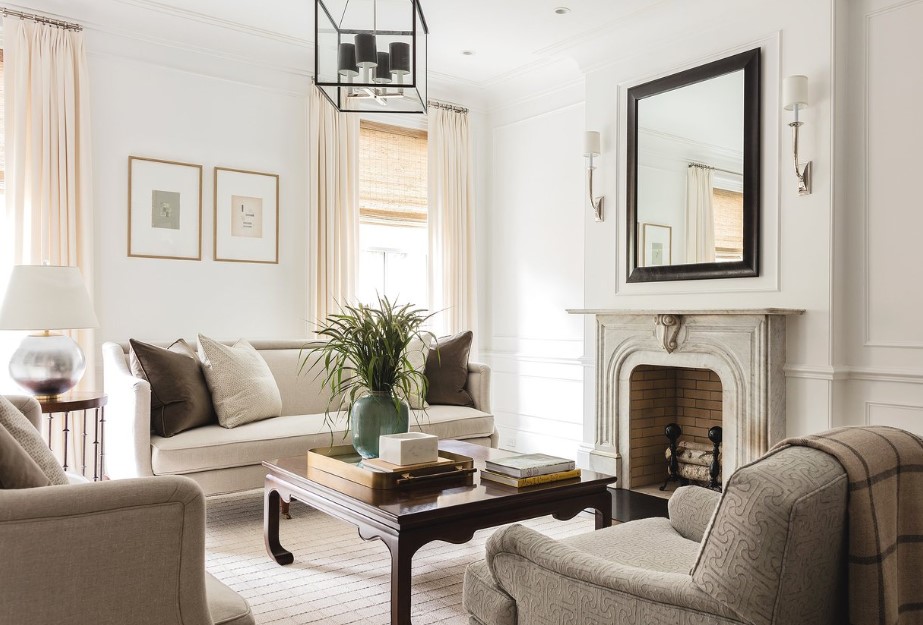

(Walls)
When we think about layering and adding texture to a room, we aren’t limited to furniture and accent pieces. A great way to add depth, texture and visual interest into a space is by incorporating things like wall coverings, tiles, and paint.
Wallcoverings can add simple texture to a space, or a bold statement as we can see in this bathroom.
We should think about incorporating tiles and paint in the same way. Here we can see this simple gray tile creates a visually stunning focal point to the room without the use of bright colors or busy patterns.
We can also make a statement and add serious depth to a room with paint. Take this dining room as an example. The emerald green focal wall adds depth and makes the other elements in the room pop.

(Lighting and plants)
And finally, two of the most important things we add to space: lighting and plants. Keeping these two things in mind when designing a space is crucial – as they literally bring light and life into a space.
We think these two topics are so important that we will actually feature a separate class for each – so stay tuned for that!
A well-designed lighting plan allows not only for your space to function as necessary, but will actually highlight all of the colors, textures, and patterns that we have brought into the space.
Brining plants into a room adds a natural element and makes your room pop. Plants add a natural layer of added dimension to a space. Often plants are the missing element in a space. They can be used a decorative centerpiece on coffee tables, or brought in as full sized potted plants. Sometimes just adding a small plant to a table makes a big difference.

